Orange Blossom Beekeepers Association
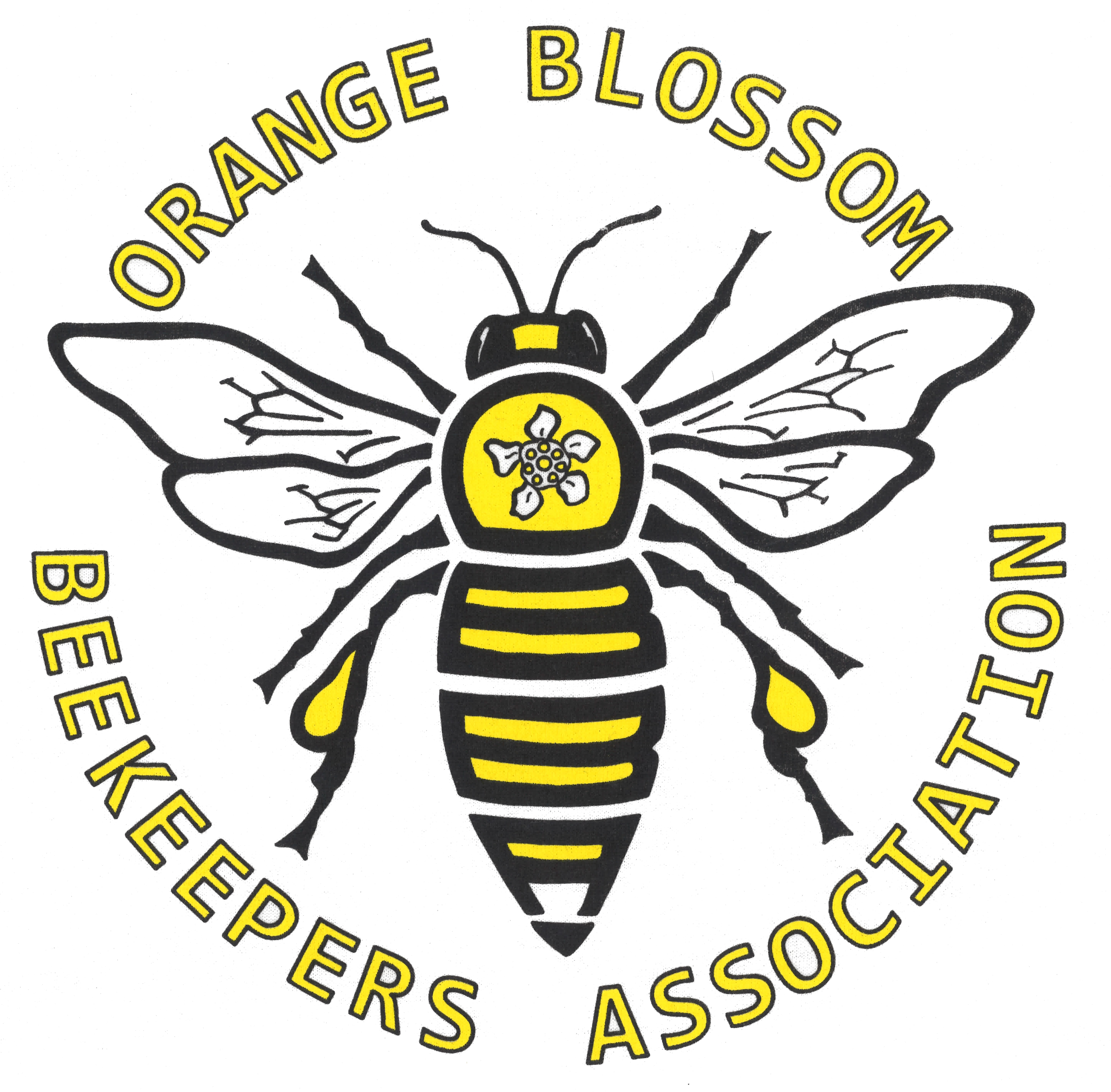
Monthly Meeting: February 21, 2021
OBBA Announcements
What's the buzz?
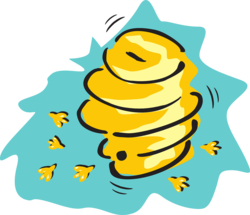
OBBA Meetings
Monthly Virtual Meetings continue…
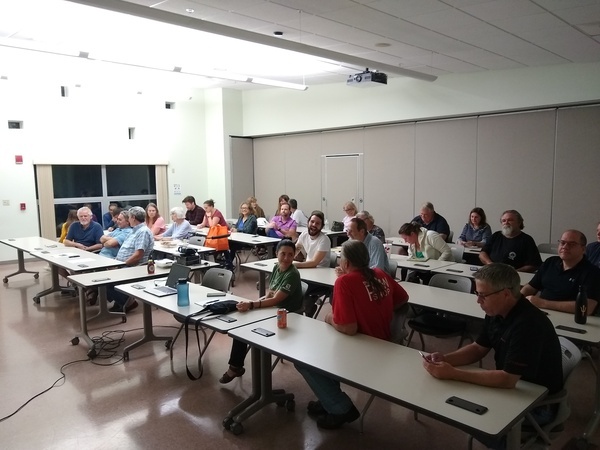
OBBA Workshop
Visit the OBBA apiary!
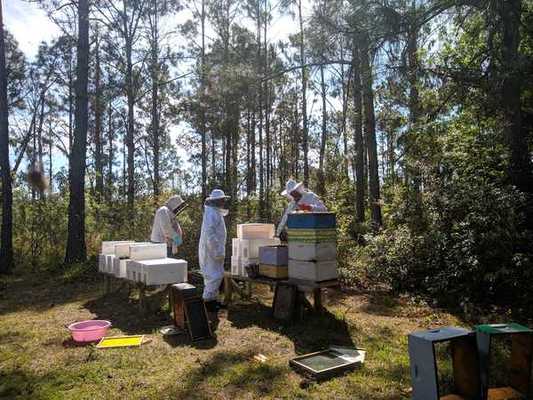
Reach out to Andrew on Slack!
Honey For Sale
We have OBBA honey to purchase!
(Send Matt a message on Slack)
| Number (1 lbs) | Price |
|---|---|
| 1 bottle | $10 |
| 2 bottles | $18 |
| 3 bottles | $25 |
2021 National Honey Bee Day
August 21, 2021
The primary goals of your National Honey Bee Day Programs should include:
- Promotion and advancement of beekeeping.
- Educate the public about honey bees and beekeeping.
- Make the public aware of environmental concerns as they affect honey bees.
2021 OBBA Member Apiaries
Flows are coming!!!
We have locations available for members who need a place for a hive!
Pay Dues
You can pay your annual dues on-line:
OrangeBlossomBeekeepers.org/join-obba/
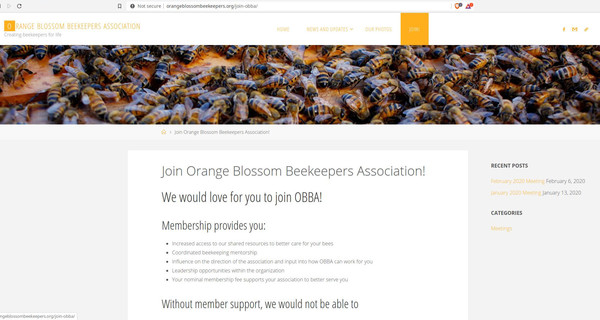
February / March Bee Management
Current UF Management Recommendations (February)
February:
- Feed colonies if light (or combine colonies)
- Check for Nosema - possibly treat with fumagilin
- Check for AFB and/or EFB - possibly treat with oxytetracycline or tylsoin (Needs a Rx)
What is blooming in Central Florida (February)
- Cherry - Prunus spp.
- Fetterbush - Lyonia lucida
- Hawthorn - Crataegus spp.
- Maple - Acer spp.
- Oak - Quercus spp.
- Plum - Prunus spp.
- Sand Pine - Pinus clausa
- Swamp Titi - Cyrilla racemiflora
- Sweet Clover - Melilotus officinalis
- Water Viburnum - Viburnum obovatum
- Willow - Salix spp.
Current UF Management Recommendations (March)
- Colony populations begin to grow!
- Remedy failing queens as necessary
- Add supers and/or swarming control
- Make nucs/splits
- Monitor for Varroa
- Treat if 3% with Apiguard, Apistan, Apivar, Hopguard, and Mite Away
- Check for AFB and/or EFB
What is blooming in Central Florida (March)
- Blueberry - Vaccinium spp.
- Cherry - Prunus spp.
- Fetterbush - Lyonia lucida
- Hawthorn - Crataegus spp.
- Oak - Quercus spp.
- Orange - Poncirus trifoliata, Citrus reticulata
- Plum - Prunus spp.
- Spanish Needle - Bidens spp.
- Sweet Clover - Melilotus officinalis
- Water Viburnum - Viburnum obovatum
- Willow - Salix spp.
Swarm Control Management
General Notes
- Assume all colonies of honey bees are likely to swarm
- Regular inspections will give you the opportunities to check for swarming indicators
- Swarm prevention measures should be part of any management system
Swarm Triggers
- Overcrowding
- Overheating
- Reduced brood area
- Reduced honey storage room
- Reduced comb building
- Aging Queen
- Reduced Queen Pheromone
- Diluted Pheremone
Signs a colony is preparing to swarm
- Queen cell cups present containing eggs/larvae/food
- Colony strong at egg laying peak
- Drones present
Types of Queen Cells
| Supersedure | Swarming |
|---|---|
| 1 – 6 queen cells | 4 – 20 queen cells |
| Same development stage | Different stages |
| Occurs anytime | Seasonal |
| Cells built lower center of comb | Cells built near bottom of comb |
| Colony often weak | Colony populous |
| Worker cells contain eggs. | Eggs absent |
Swarm Queen Cell
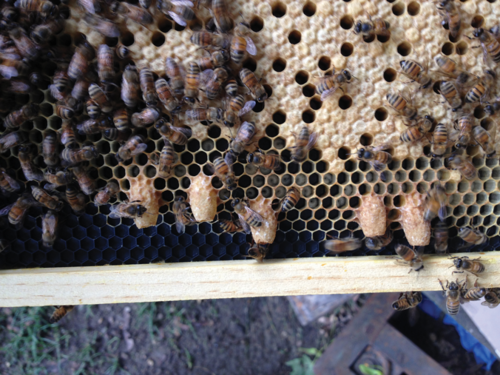
Supercedure Queen Cell
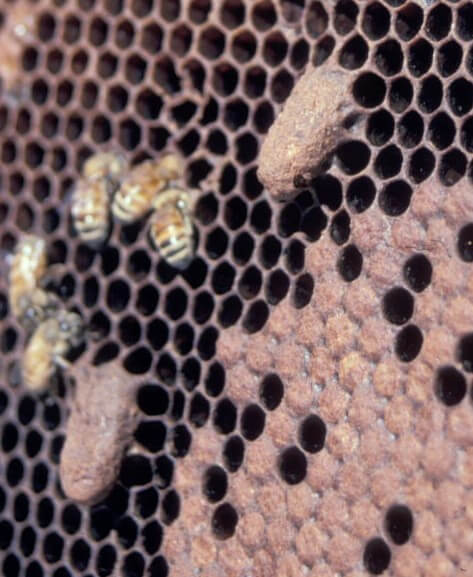
Emergency Queen Cell
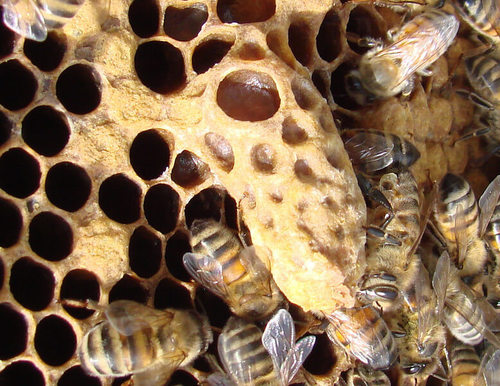
Swarm Rules
- Dry queen cups (nothing in them)
- Can be left
- Charged queen cups containing brood food
- Initiate swarm control procedures
- Sealed queen cells
- Too late – the swarm has emerged
Swarm Prevention Methods
Separate 1 from the other 2:
- Queen
- Flying bees (foragers)
- Brood
Simplest method - Collect the Swarm
An old beekeeper had an armchair in his apiary, where he sat to watch his bees during the summer months.
If a swarm issued, he collected the swarm and returned to his chair.
Swarm control but not prevention!
When queen cells are found
- No queen/swarm gone:
- Leave an unsealed queen cell or divide into nuc
- Queen present/colony not swarmed:
- Make a split (artificial swarm)
Breaking down queen cells is not a method of swarm control
Ways to Deter Swarming
- Remove some bees and brood to make a nucleus
- Move some brood to another colony
- Exchange a populous colony with swarm cells with a weaker colony in the apiary
- Add a super with empty drawn comb and foundation
- Remove the supers and bees and combine with a weak colony (newspaper)
Bait boxes
- Prepare good locations for a swarm to choose if one of your hives does swarm
An Artificial Swarm Method (Pagden)
- Breakdown the hive and place the [old] hive box/floor/roof off to one side
- Place a new floor, brood box (with frames +/- drawn comb) on the original site.
- Find the queen in the [old] brood box. Move her to the [new] box with a frame of unsealed brood.
- Make sure there are no queen cells on this frame
- Replace supers and roof on [new] hive (with queen and unsealed brood)
- In the [old] colony (with eggs, brood and nurse bees), find a nice, large queen cell and leave in place in the center of the brood. Replace the crown board and roof.
- At this stage the original colony has been artificially swarmed.
- The old queen and flying bees (in the new box) have been separated from the brood and nurse bees (in the old box).
- Any flying bees from the old box, will return to the old site and rejoin the queen
- At this stage the original colony has been artificially swarmed.
- After around 6 or 7 days, relocate the [old] hive to the other side of the new [original queen containing] hive.
- Newly flying foraging bees trying to return to the old hive will drift to the new hive, thus adding to the numbers of the artificial swarm.
Stay involved, Stay connected
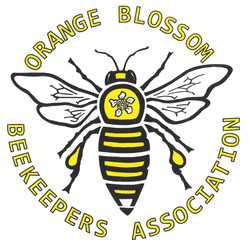
- OrangeBlossomBeekeepers.org
- Slack: OBBA.slack.com
- Facebook: Orangeblossombeekeepers
- Instagram: OrangeBlossomBeekeepers